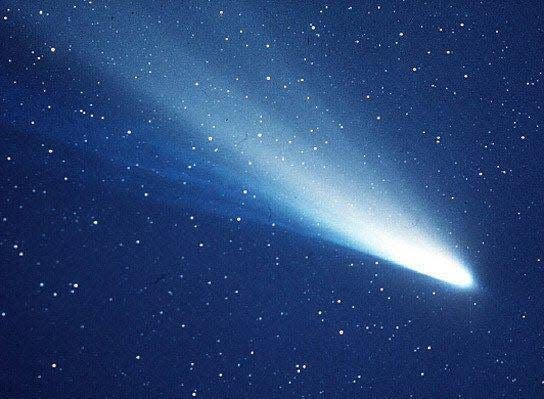Pieces of Halley's comet to shower skies this weekend in Eta Aquarid meteor shower
- Oops!Something went wrong.Please try again later.
Twinkling rubble from Earth's most famous comet will rain into our atmosphere during the early morning hours of Saturday, May 4, Sunday, May 5, and Monday, May 6 with weather conditions in South Florida mostly favorable to see the show.
Halley's comet, although not visible again until 2061, reminds us of its existence twice a year with the Eta Aquarid meteor shower in May and the Orionid meteor shower in October.
Although the Eta Aquarid shower is active from mid-April through the end of May, the American Meteor Society says the peak this year is May 5. The twilight hours before dawn on days bookending the peak are also a good time to look for the speeding pieces of space debris.
Solar eclipse 2024: Palm Beach County sees rare sun event. 'A life-changing event.'
The National Weather Service in Miami predicts mostly clear skies during the weekend, and the moon will be nearly new, meaning less light pollution from Earth's only natural satellite.
South Florida is in a better position than most areas of the country to see the Eta Aquarid shower as it favors the southern hemisphere. That's because the point in the sky where the meteors appear to come from is in the constellation Aquarius, which is higher in the sky in the southern hemisphere.
In the southern reaches of the U.S., Earthsky.org says 10 to 20 meteors per hour may be seen.
"Farther south, at latitudes in the southern hemisphere, you might see two to three times that number," EarthSky notes.
In the northern hemisphere, NASA says the Eta Aquarid meteors are often seen as "earth grazers" that look like they are skimming the planet's surface at the horizon.
Photos: SpaceX Falcon 9 rocket rises above West Palm Beach

Because Eta Aquarid meteors are traveling at a swift 148,000 mph into Earth's atmosphere, they are known to leave glowing trains of light in their wake that can last for several seconds to minutes, according to NASA.
Halley's comet was discovered by Edmund Halley in 1705 but is believed to have been recognized for millennia.NASA says the comet is featured in the Bayeux Tapestry, which is an embroidered cloth that depicts the Battle of Hastings in 1066.
The meteors will be visible throughout the night sky, so there is no need to look in one particular area.
Kimberly Miller is a journalist for The Palm Beach Post, part of the USA Today Network of Florida. She covers real estate and weather, and has a certificate in weather forecasting from Penn State. Subscribe to The Dirt for a weekly real estate roundup. If you have news tips, please send them to kmiller@pbpost.com. Help support our local journalism; subscribe today.
This article originally appeared on Palm Beach Post: Eta Aquarid meteor shower is dust from Halley's comet, peaks May 5
